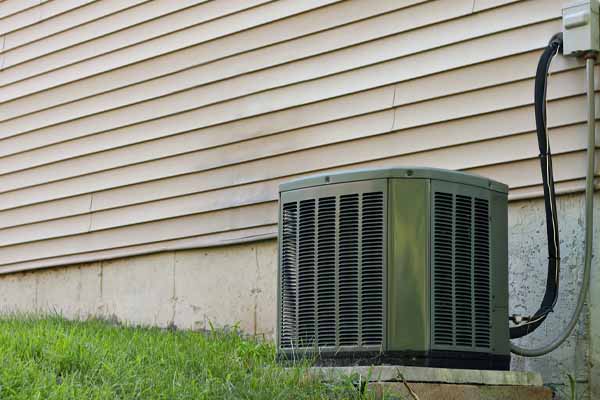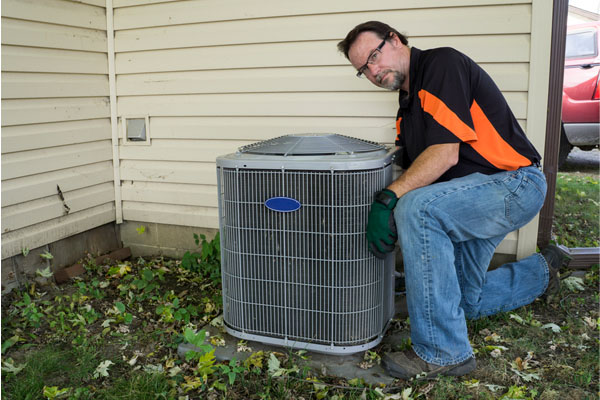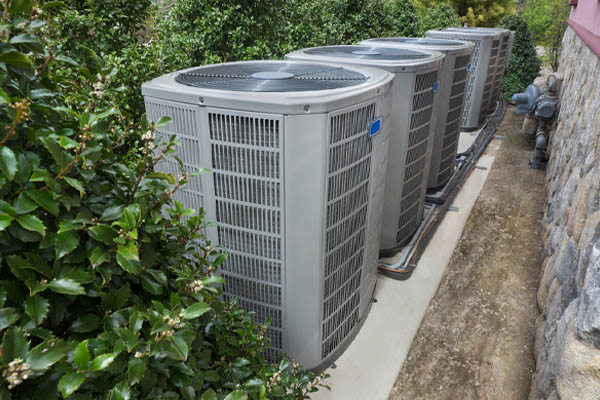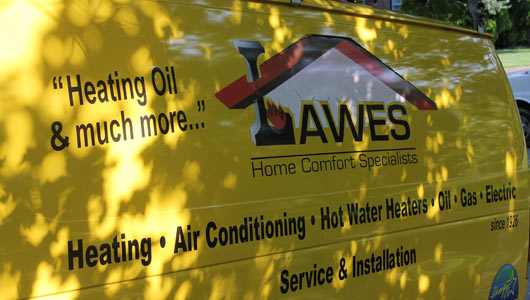The Importance Of Enough Space Around Your Outdoor AC Unit

Air conditioners require breathing room. They perform better and survive longer with adequate clearance and airflow. And that’s why, during an air conditioner installation, HVAC experts must conform to HVAC industry regulations. Additionally, homeowners should keep an eye on their outside air conditioners. It’s possible that things, such as landscaping, will become too close over time. Perimeter checks should be done all year long. It’s impossible to say how much room an AC outside unit will need without knowing the specifics of your case. Continue reading to find out more about the space required for AC outdoor unit.
Why Does An Outdoor Air Conditioning Unit Need Adequate Clearance?
Contents
HVAC systems require unrestricted airflow both inside and outside the outdoor unit. Without enough clearance, they cannot receive sufficient air. The following problems may occur as a result:
1. Less Air Conditioner Energy Efficiency

The cooling system will work harder to make up for not having enough air. However, this will use more energy and cost more money in the long run.
2. Inadequate Indoor Cooling
The air conditioner will not be able to cool the house sufficiently. And this means that residents may still be warm even after the air conditioner is turned on.
3. Overheating of An Air Conditioner Component
The heated air contained within the outdoor unit will be unable to escape rapidly. Air conditioner overheating of the components could lead to HVAC repairs and early equipment failure.
How Much Clearance Around An Outdoor Air Conditioning Unit Is Required?

The outdoor air conditioning unit is the one that pushes heat from the interior of the house to the surrounding environment. It can do so successfully only if there is sufficient airflow surrounding the coils. As a general guideline, at least 1-2 feet should be cleared around the unit. More than this may be recommended by some manufacturers. For specific instructions, consult the owner’s manual or speak with your HVAC contractor. The types of impediments in the immediate area will also have an impact on the required minimum clearance. Some of the most typical concerns are as follows:
1. Obstacles to Construction
These are the physical structures that surround the property, such as walls and fences. If they are made of solid materials, they will obstruct the movement of air. You don’t want the outside unit too close to them. The AC will have a difficult time keeping the house at a comfortable temperature. Long-term airflow limitation could possibly cause damage to the compressor. It is critical to maintain a minimum distance of two feet from these impediments. The additional distance simplifies the process of drawing air into the unit and cooling the hot coils.
2. Obstacles to Landscaping
Many individuals dislike the appearance of the outside air conditioning unit. They may believe it contrasts with the house’s design. They may even conceal the device entirely by planting additional shrubs and potted plants around it. This could improve the exterior appeal, but it could also cause issues within the home. A lack of airflow can have a negative impact on the efficiency, performance, and lifespan of an HVAC system. Much like an HVAC unit will not work properly with a clogged HVAC air filter, the same holds true for the air conditioner’s condenser. It’s a good idea to keep a two-foot gap around the equipment. The perimeter of a home should be trimmed frequently because plants can grow fast.
3. Mechanical Impediments
With these obstacles, the outside AC unit has the most difficulty operating. Appliance vents, kitchen exhaust, and laundry dryers are all examples. Airflow can be disrupted if these are placed too close to the unit. In other cases, such as with oil tank fill valves and gas vents, it could potentially be harmful. For the sake of safety, a substantial distance must be maintained. According to experts, four feet is the very minimum, but keeping them as far away from you as possible is the ideal strategy. Installers of HVAC systems will look elsewhere on the property for a suitable location.
Overhead Clearance & Outdoor Air Conditioner Unit

Take note that the unit’s top is also important. After you’ve cleared the sidewalls, turn your attention to the items above the air conditioner. Many modern versions emit hot air upwards. If something interferes with this flow, the heated air will be forced back down, resulting in overheating. Debris, such as dry leaves and branches, is a typical source of the problem. Shrubs in the immediate vicinity can also grow to the point where they completely cover the top of the unit. Decks that are built above an outdoor air conditioner are sometimes responsible for such problems. It’s possible that the space between the top and the deck boards is insufficient. Low roof overhangs and decorative coverings might also be the issue. A minimum of 8 feet of overhead clearance is recommended.
The Distance Between Two Outdoor Condensing Units
There must be careful consideration of the distance between two or more outside units if they are installed by professional installers. Air intake will be impeded if the units are placed too close together. It’s possible that one unit could overheat if it draws in hot air from the other one. Under these circumstances, the air conditioner will have a difficult time cooling the house down. It is critical to maintain a minimum separation of 4ft.
An Outdoor Heat Pump’s Spacing
If you live in a mild environment, heat pumps may be a good alternative for both heating and cooling. In addition, there needs to be enough room for the outside equipment. During the winter, homeowners must be extra careful since snow and ice can easily cover it. Ensure that the coils are constantly above the snowpack. To ensure maximum system effectiveness, snow removal around the heat pump should become a habit. Snow can sometimes find its way inside the unit, necessitating the need to clean it. If you’re not comfortable doing the job yourself, you can hire an HVAC professional to assist you.
Inspection of the Site Prior to HVAC Installation

Prior to installation, HVAC professionals will visit the site and determine the best location for the outdoor unit. They’ll get to know the property’s layout and look for any problems that could arise with the system’s performance. They’ll use all of this information to determine the proper clearance across all sides. They will be able to design and install the device based on their findings. Prior to installation, homeowners can inquire with their HVAC contractor about the issue of the clearance. By taking a more active role, they can have a better understanding of the subject while also assisting in ensuring sufficient spacing. Errors and performance concerns that are costly are far less likely to occur.
Conclusion
An adequate amount of AC clearance is essential to the proper installation of an HVAC system. If you want to avoid problems in the future, it’s best to hire a team of trained and licensed air conditioning experts. Using their knowledge and experience, they will ensure the greatest possible outcome through meticulous preparation and implementation.
Call Lawes Company For All Your Air Conditioning Needs

Lawes Company offers top-notch heating and cooling solutions in Monmouth and Ocean County, New Jersey. We only employ certified HVAC technicians who can do great heating and cooling tune-ups, repairs, replacements, and installations. Each of our technicians possesses the necessary knowledge and experience to properly service your HVAC system.
Lawes Company guarantees the most cost-effective heating and cooling service charges in the area. The maintenance services we offer will enhance your comfort, improve your energy, and lower your home cooling expense. For homeowners who need an HVAC repair or replacement unit, we can propose the most appropriate one for your home while remaining within your budget. We guarantee all of our work for your complete satisfaction. To schedule an appointment for an air conditioner service or tune-up, call Lawes Company today. We also provide in-home estimates for free.
Contact us now at (732) 741-6300 to find out more!